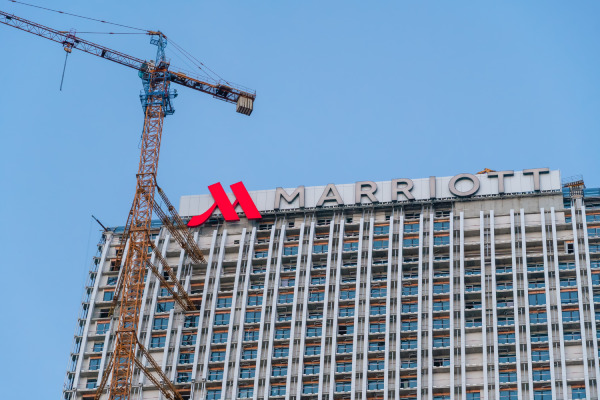
In hospitality, people are the product. Yet when it comes to planning for future leaders, the industry often drops the ball. According to research, 60% of companies lack any CEO succession plan, and only 14% believe they are doing it effectively. That is not just a talent issue but a strategic risk that can impact guest satisfaction, brand integrity, and operational stability.
Succession planning is more than a contingency plan. It is a long-term investment that should be embedded into a company’s strategic DNA. Unfortunately, many hotel operators, especially those in family-owned and founder-led organizations, delay addressing it until a departure or crisis forces them to act. This reactive approach invites disruption. A proactive strategy, on the other hand, builds continuity, resilience, and sustained value.
It is time for hospitality leaders to treat succession as a future-focused investment in organizational health, not just a fallback.
The Hidden Costs of Poor Planning
Succession gaps ripple through every layer of an organization. Poorly planned leadership transitions can increase turnover and knowledge loss, while decreasing morale. These effects often translate into lower service quality and eroded guest experience.
For example, Cornell research has shown that the average cost of replacing a hotel employee can be nearly $10,000 when accounting for recruiting, training, and lost productivity. With leadership roles, those costs rise exponentially.
Family-owned hotels are especially vulnerable to the negative consequences of poor succession planning. Studies suggest that two-thirds of such properties will undergo ownership changes in the coming years, yet most still lack structured transition plans. In many cases, succession becomes an emotionally charged issue rather than a strategic priority.
What is at stake is not just continuity. It is the long-term viability and legacy of the brand.
A lack of clear planning also creates uncertainty at all levels of the organization. Staff may become disengaged or start seeking new opportunities if they sense instability at the top. Vendors and partners may hesitate to make long-term commitments. Guests can often feel the ripple effect too — as service consistency suffers during periods of internal flux.
Moreover, reputational damage from a botched transition can be hard to reverse. In a business where word-of-mouth and brand trust are paramount, even a temporary dip in leadership effectiveness can have lasting consequences.
From Backfill to Bench Strength: Rethinking Readiness
Too often, succession planning is reduced to identifying a second-in-command and filing away a backup plan. But real readiness is about cultivating a deep bench of future leaders.
Companies with strong leadership pipelines tend to outperform their peers. According to a 2019 study, strategic bench-building correlates with improved financial performance and operational agility.
A proactive approach involves structured development paths, rotational assignments, and performance milestones spanning multiple leadership levels.
One example of this approach could be a mid-sized boutique hotel group implementing a program to rotate assistant general managers through finance, food and beverage, and guest operations. Internal promotion rates increased by 40% within two years, and overall management retention improved. This illustrates how bench building supports both operational resilience and employee engagement.
Bench strength also reduces the risk of “key person” dependencies — where a single leader holds critical knowledge or relationships that the business cannot afford to lose. When multiple team members are groomed for leadership, the organization becomes more flexible, less reactive, and far more adaptable in the face of change.
What High PotentialReallyLooks Like
Identifying future leaders goes beyond job titles and tenure. True high-potential talent often shows up in adaptability, emotional intelligence, and strategic thinking.
In hospitality, cultural fit is just as important as technical skill. Future leaders must embody the brand’s values while also pushing it forward. Organizations that broaden how they define leadership potential are more likely to foster diverse and innovative teams.
Key indicators of high potential include initiative, curiosity, comfort with ambiguity, and the ability to influence others. Those who seek feedback, demonstrate cross-functional thinking, and stay calm under pressure often emerge as natural leaders. Succession planning should focus on these qualities, not just resumes.
Too often, companies overlook promising individuals because they don’t fit a conventional mold. But leadership doesn’t always look like loud confidence or sharp suits. Sometimes, it’s quiet composure in a crisis or the ability to bring calm to a high-pressure room. High potential is not about who talks the most in meetings — it’s about who listens, learns, and lifts others.
It also pays to think in terms of leadership range: who can adapt their style to different contexts? Who can lead both a team of direct reports and a cross-functional initiative? Who knows when to drive and when to delegate? These subtler attributes often prove more valuable over the long haul than technical mastery alone.
Five-Year Vision, Not Five-Week Reaction
Succession planning is not a scramble; it is a strategic roadmap. The most successful organizations take a five-year view, mapping leadership development across multiple levels.
This includes structured coaching, formal assessments, and staged career milestones. Organizations that prioritize long-term leadership development are 1.5 times more likely to outperform their peers financially.
Leadership readiness is not about predicting the future but preparing for it.
That preparation must include space for iteration. As business needs evolve — whether due to macroeconomic shifts, consumer behavior, or internal growth — the succession roadmap should flex accordingly. A five-year view doesn’t mean a rigid plan; it means a dynamic one anchored in clear intent.
It also requires collaboration between departments. HR can lead the process, but input from finance, operations, marketing, and ownership ensures alignment across functions. When everyone is invested in building the next generation of leaders, succession becomes a shared priority — not an isolated initiative.
What a Leadership Development Roadmap Should Include
A practical roadmap aligns talent development with business strategy. It typically begins by identifying high-potential individuals early and assigning them clear developmental goals. An example strategy could be:
- Year 1: Identify future leaders, initiate mentorships, and begin performance tracking.
- Years 2–3: Introduce cross-functional projects and leadership training.
- Year 4: Assign interim leadership roles and provide executive coaching.
- Year 5: Prepare successors for promotion and create transition timelines.
Regular check-ins, 360-degree feedback, and leadership simulations help ensure accountability. This structured progression also boosts internal mobility and morale.
Another valuable element is shadowing — giving emerging leaders the chance to observe senior decision-making up close. Whether sitting in on board meetings or assisting with annual planning, these experiences provide context and confidence that no classroom can replicate.
Clear communication is also essential. Employees should know that leadership development is happening — and that it’s based on merit, not favoritism. Transparency around the process builds trust and encourages participation.
Succession at Every Level, Not Just the Top
Succession planning must go beyond the CEO’s office. In hospitality, the departure of a department head, general manager, or director of operations can create operational stress if no successor is ready.
Developing a bench across key functional areas ensures continuity in service, reduces stress on remaining staff, and protects brand consistency. For example, identifying future leaders in finance, HR, marketing, and guest services should be part of a comprehensive strategy.
A strong pipeline at every level enhances agility and responsiveness during transitions.
Organizations that apply the same discipline to mid-level and frontline succession often see a boost in engagement and retention. When team members see a path forward, they are more likely to stay, grow, and invest in the business. That sense of future — of possibility — becomes a powerful lever for performance.
It also strengthens the leadership culture overall. When succession is normalized across levels, it becomes less about replacing individuals and more about sustaining excellence.
When to Look Outside: The Role of Executive Search Partners
There are moments in a company’s lifecycle when looking outside becomes not only helpful but necessary. This often happens during inflection points — rapid growth, a generational shift in ownership, a pivot in strategy — when the leadership needs of tomorrow no longer match the internal bench of today.
Executive search partners bring objectivity, discretion, and access to talent pools beyond a company’s immediate network. They also offer critical market data and benchmarking. This information helps boards and owners understand how their internal talent stacks up against external standards, what competitive compensation looks like, and where the bar is truly set in the broader industry.
In these moments, the best search firms act as strategic extensions of the company itself, aligning long-term vision with market reality and helping organizations make bold, well-informed choices about the future.
The right external hire can also reinvigorate culture, bring in new capabilities, and signal change. When thoughtfully integrated, outside talent can complement — not compete with — internal development efforts.
Lessons From the Inside: A Future CEO’s Perspective
Having been part of a deliberate succession plan myself, I’ve seen firsthand how much intention it takes to prepare an internal candidate for a CEO role — and how much clarity it brings when done well. For those being positioned for leadership, the path isn’t always linear. Readiness isn’t just about results — it’s about exposure, sponsorship, and the opportunity to contribute beyond your current title.
Future CEOs need development, yes — but they also need opportunities to step outside their functional swim lanes, to influence beyond their immediate sphere, and to be part of strategic conversations long before any formal transition begins.
From the inside, the clearest lesson is this: succession planning isn’t a moment. It’s a process, one that requires intentional sponsorship, exposure to the board, and alignment on what the company will need five years from now, not just today.
Being groomed for leadership also requires a balance of challenge and support. Stretch assignments that test capacity, combined with access to senior mentors who offer honest feedback, can accelerate growth dramatically. And when that growth is nurtured in the open, with clear communication and support from senior stakeholders, it strengthens both the individual and the institution.
Resilient Leadership for a Resilient Brand
Behind every exceptional guest experience is a solid leadership structure. When that structure is left to chance, the entire organization is vulnerable.
Succession planning is not just a human resources function. It is a business imperative. Companies that invest in leadership continuity are better equipped to navigate change, retain talent, and preserve brand identity.
Future-proofing begins with people. And the time to start is now.
Reprinted from the Hotel Business Review with permission from www.HotelExecutive.com.
Alice Sherman
Executive Vice President & Managing Director, Americas at HVS
HVS








